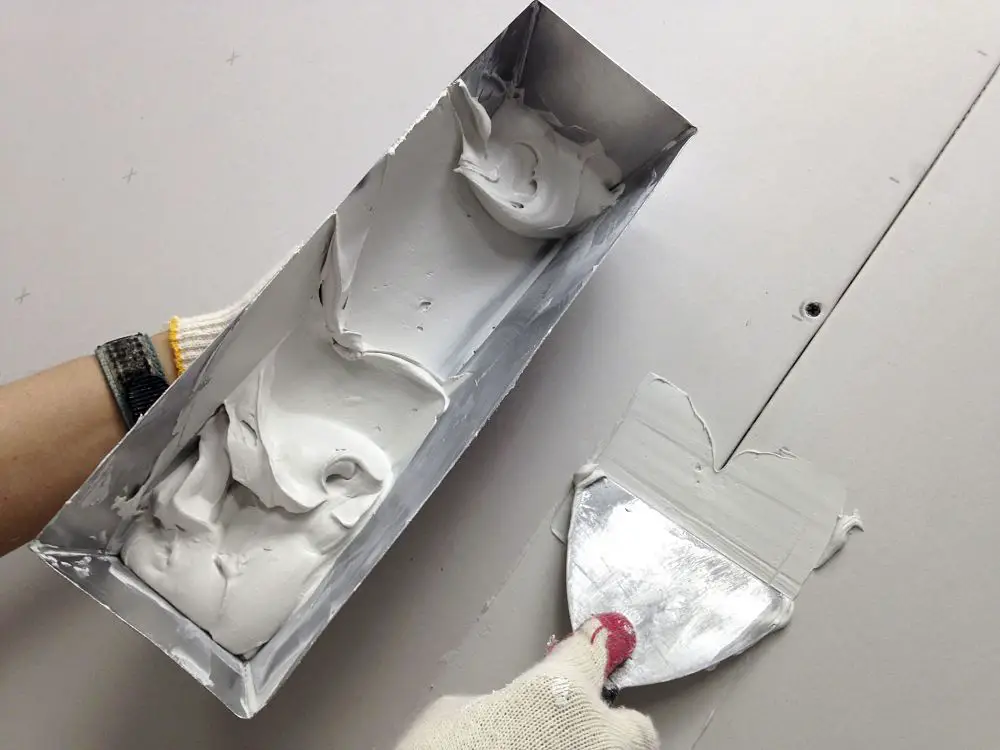Whether you are building or repairing walls, you always have difficulty in deciding on the best products to use. It becomes much trickier especially when two products have some overlap in their planned purpose, as joint compound and spackle do. However, the battle between joint compound vs spackle must be settled.
Both joint compound and spackle perform similar tasks, however, they are needed in different jobs and situations. They look almost alike to the untrained eye. Furthermore, they are both high-quality in their own way, hence it isn’t just a matter of choosing the best option. Although each option performs best in certain situations.
Joint compound and spackle have different formulations that affect factors such as shrinkage, dry time and the scope of a project. To help you pick the best option for your wall repairing or construction project, we wrote this complete guide. We will discuss everything you need to know about joint compound vs spackle.
The difference between joint compound vs spackle
Joint compound
1. Uses
Joint compound is used for dry-walling projects and large-scale related work. This compound can be used for smaller tasks as well. Nevertheless, it is not designed for this purpose. It is created so you can splash a whole bunch of it on the surface at once. Most homeowners don’t require this if they want to be ready for minor repairs. However, if you are a determined DIYer who wants to be ready for everything, the joint compound is something great to have around.
2. Material
Joint compound comprises of simply gypsum dust that you mix yourself to a cake frosting-like consistency. You can as well find it pre-mixed in a tub. It is about the consistency of cake frosting that makes it easier to lather walls and other materials. It can create a smooth surface with undetectable seams for painting or other projects.
3. Cost
Joint compound is quite inexpensive. Comparing joint compound vs spackle price, joint compound is much cheaper. Nevertheless, you are going to use fairly a bit of it at a time so that the cost can sum up after extensive use. For a large project, you still end up spending a reasonable amount of money despite the fact it is a cheaper material.
Our best joint compound
Dap 10100 Wallboard Joint Compound

The Dap 10100 is designed for interior use and it is convenient for smooth, high-quality finishing of gypsum panel joints. It comes as a ready-mixed formula that is easy to apply. Also, it has minimal shrinkage and sands easily.
Pros
- Easy to use
- Effective product
- Affordable price
Cons
- Too watery
[maxbutton id=”1″ url=”https://amzn.to/3rpXeoP”]
Spackle
1. Uses
Comparing joint compound vs spackle uses, we can conclude that the latter is used for smaller applications such as fixing nails holes on the wall as well as other related tasks. Although you can use it for larger projects, it will take longer and you will end up spending more money.
2. Material
Spackle is also made from gypsum, very similar to a joint compound. Nevertheless, it is more paste-like, which makes it more usable in certain situations. It is thicker as well and is designed for spot-treatments. When it comes to comparing spackle vs joint compound ability to spread, the latter wins.
3. Cost
Comparing spackle vs joint compound prices, spackle is a bit more expensive. Nevertheless, you can use less of it so that the cost can balance out. A little spackle can go a long way. It is pricier upfront, but you won’t spend that much on it since you are using very little.
Our best spackle
Red Devil 0544 ONETIME Lightweight Spackling

Red Devil 0544 is designed for interior as well as exterior use. You can use it anywhere around the home. If you are looking forward to a professional-looking finish, apply it with any putty knife and you will be surprised by how it spreads easily.
Red Devil 0544 requires only a single application to create a permanent, long-lasting repair. Fortunately, it doesn’t shrink or crack even after the single application. Additionally, it doesn’t need sanding, simply smooth the repair flush with the wall and you are done.
Pros
- Fast drying
- Easy to use
- Has lightweight
- Effective product
Cons
- Doesn’t stick easily
- Some users complain of poor quality
[maxbutton id=”1″ url=”https://amzn.to/3aHc8k1″]
Joint Compound Vs Spackle, Which One to Pick?
Even though personal preference plays a role in choosing spackle vs joint compound, it comes down to what you will be doing with it; the job at hand. If you are trying to fill some holes and need to spread a thin layer, then spackle is the best option. Nevertheless, if you are trying to thicken up a wall, cover a large hole or you want a surface that will be easy to sand, then the joint compound is the ideal product.
Almost every homeowner is going to need spackle for the majority of their projects. If you are redoing a room or a wall, you may need joint compound. On the other hand, when in doubt, consider how much you need to use. Spackle is for smaller projects and the joint compound is for large projects.
Conclusion
We believe the battle is now settled, joint compound vs spackle. We can arguably conclude that Joint compounds are for large projects and spackle is for smaller projects. While these products are both very similar, you must pick the correct one for your needs. if you are wondering which one to stock up on, we recommend spackle because it is likely going to be used more regularly.
We hope that the above information has given you a reasonably clear understanding of spackle vs joint compound. Whenever there is a need for small kinds of work spackle could be a sensible choice although you can substitute it. Conversely, for large-scale work that is complicated in nature, there is no substitute to joint compound. Both products have their own characteristics, uniqueness and versatilities and therefore homeowners should pick the one that suits their precise needs and requirements.




